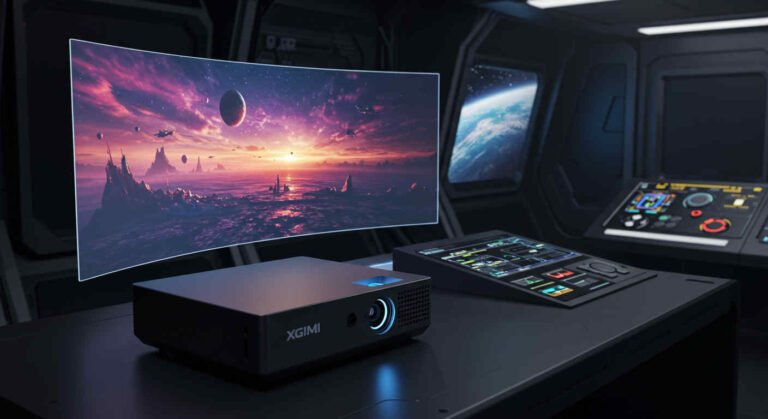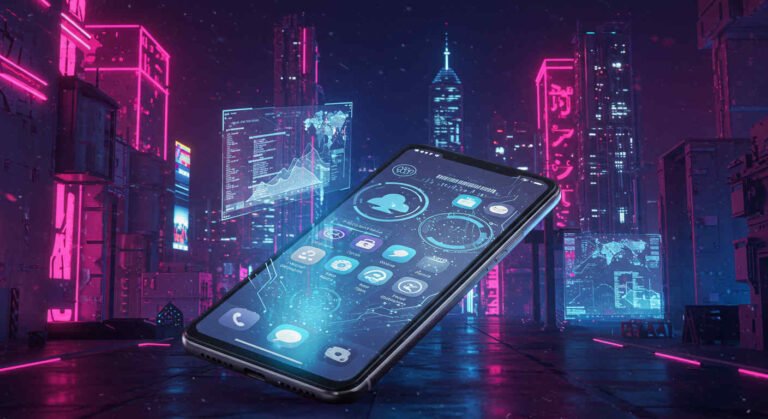Smartphone Lenses Camera Showdown: Comparing the Latest Tech
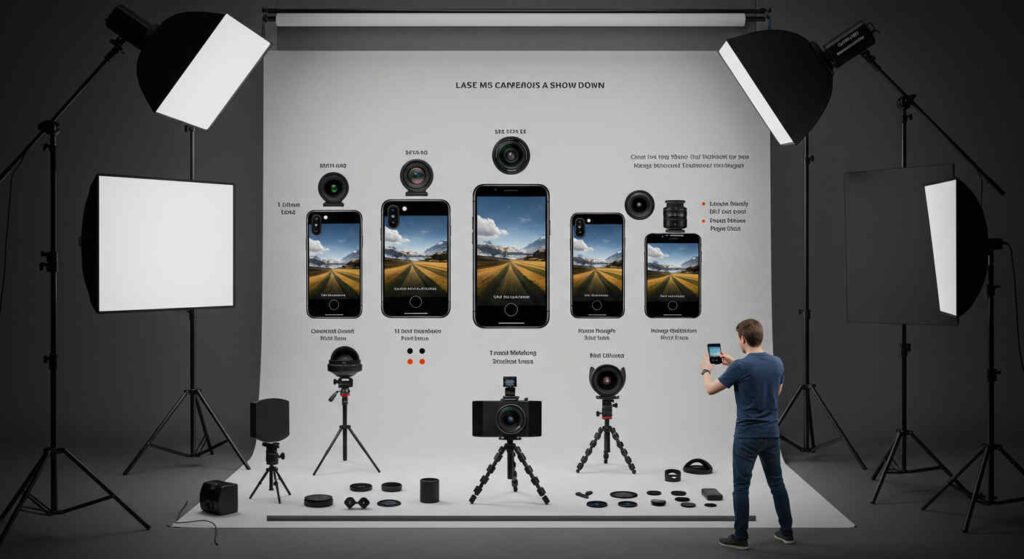
Table of Contents
Picture this: you’re holding a phone that snaps pics so sharp they could cut glass, turning every moment into a frame-worthy masterpiece. In 2025, smartphone cameras ain’t just cameras—they’re magic wands, waving away blurry selfies and grainy night shots like a bad dream. These pocket-sized powerhouses pack lenses that dance with light, brains that think faster than a speeding bullet, and tricks that make pro gear jealous. But with a slew of big dogs barking for the top spot, who’s got the best camera in town?
Buckle up, ‘cause we’re diving into a head-to-head brawl between five flagship phones—Samsung Galaxy S25 Ultra, iPhone 17 Pro Max, Google Pixel 10 Pro, Huawei Pura 80 Ultra, and Xiaomi 15 Pro. We’ll zoom in on their specs, test ‘em in the wild, and see who’s king of the shutter. Holy moly, this is gonna be a wild ride!
The Smartphone Camera Craze

Smartphone cameras have come a million miles since those fuzzy, pixelated days of yore. Back then, your phone’s camera was like a kid with a crayon—cute but messy. Now? It’s a full-blown artist, painting the world with light, smarts, and a sprinkle of AI fairy dust. Bigger sensors gulp down light like a camel at an oasis, multiple lenses juggle every angle, and AI tweaks shots faster than you can say “cheese.” Smartphone Lenses have transformed the game, delivering versatility and precision that rival dedicated cameras. In 2025, folks are downright obsessed—over 80% of buyers pick their phone based on its camera, leaving battery life and speed in the dust.
This showdown’s all about the heavy hitters, the cream of the crop, each flexing its brand’s best camera chops. We’re judging ‘em on lenses, sensors, brainy features, video skills, night shots, and how they hold up in real life. To keep it fair, we tested these bad boys in the same spots—bright days, dark nights, close-ups, far-offs, and videos—using default settings like your average Joe would. Let’s meet the players and see who’s ready to rumble.
The Lineup
1. Samsung Galaxy S25 Ultra

Samsung’s been a camera champ forever, and the S25 Ultra’s a beast with four lenses ready to tackle anything.
- Main Lens: 200MP ISOCELL HP4, f/1.7, big ol’ 1/1.12” sensor, Super Quad Pixel focus
- Ultra-Wide: 50MP, f/2.2, 120° view
- Telephoto: 50MP, f/3.4, 5x zoom, 10x hybrid
- Periscope Telephoto: 50MP, f/4.0, 10x zoom, up to 100x Space Zoom
- Selfie Lens: 40MP, f/2.2
- Cool Tricks: 8K video at 60fps, AI-powered Nightography, Pro Visual Engine for instant tweaks
2. iPhone 17 Pro Max
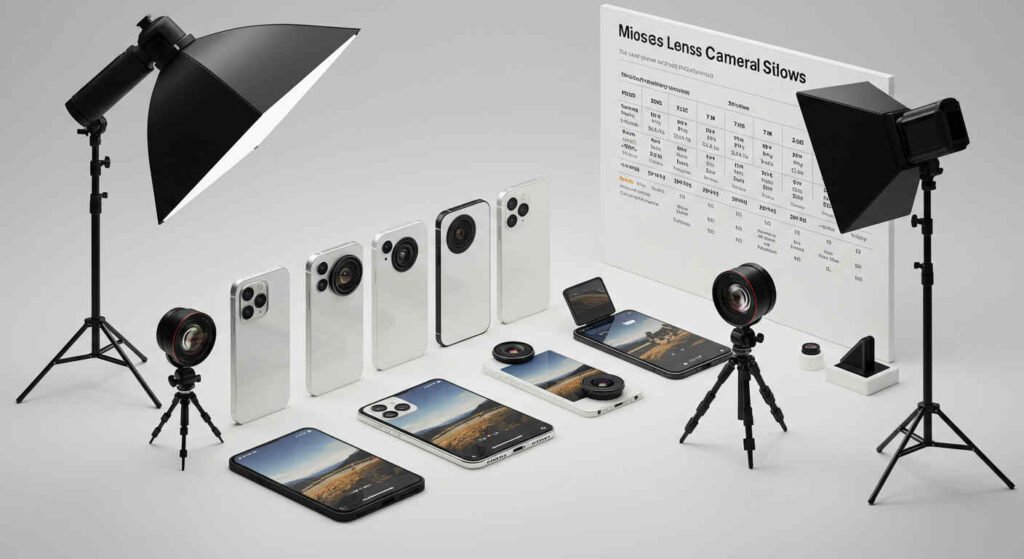
Apple’s iPhone 17 Pro Max keeps it smooth with three lenses, leaning on slick software and movie-making magic.
- Main Lens: 48MP Fusion, f/1.78, 1/1.28” sensor, second-gen quad-pixel focus
- Ultra-Wide: 48MP, f/2.2, 120° view, macro mode
- Telephoto: 48MP, f/2.8, 5x zoom, up to 25x digital
- Selfie Lens: 12MP TrueDepth, f/1.9
- Cool Tricks: 4K Pro 120fps ProRes video, Cinematic Mode with depth, Photonic Engine for killer HDR
3. Google Pixel 10 Pro

Google’s Pixel 10 Pro keeps it simple, letting AI work overtime to churn out jaw-dropping pics with just three lenses.
- Main Lens: 50MP Octa PD, f/1.68, 1/1.31” sensor
- Ultra-Wide: 48MP, f/2.0, 125° view
- Telephoto: 48MP, f/2.8, 5x zoom
- Selfie Lens: 12MP, f/2.2
- Cool Tricks: Magic Editor for AI edits, Real Tone for spot-on skin, 4K 60fps with HDR+
4. Huawei Pura 80 Ultra
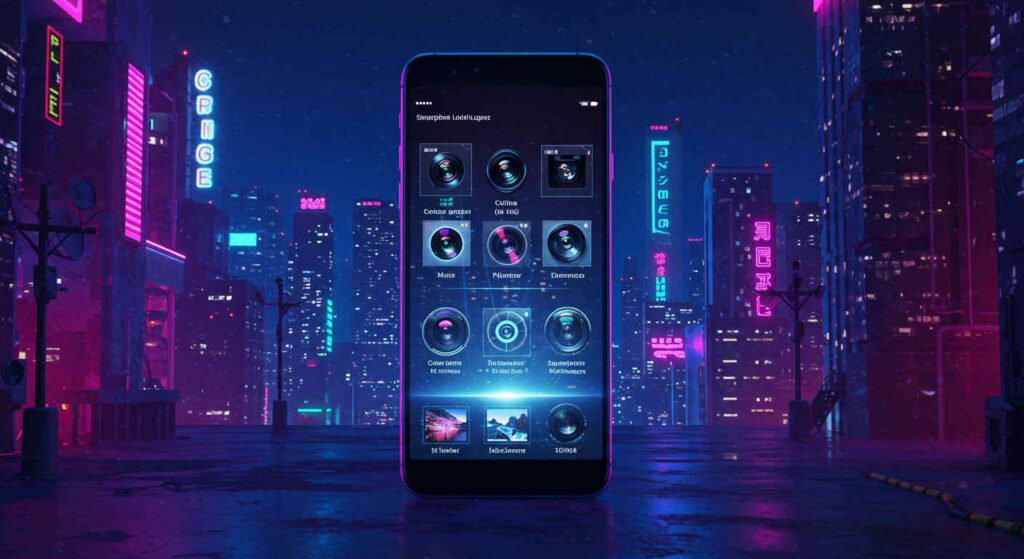
Huawei’s Pura 80 Ultra mixes fancy hardware with AI smarts, shining in dim light and far-off shots.
- Main Lens: 50MP retractable, f/1.6-f/4.0 adjustable, huge 1/1.0” sensor
- Ultra-Wide: 40MP, f/2.2, 112° view
- Telephoto: 50MP, f/2.1, 3.5x zoom, up to 50x digital
- Selfie Lens: 13MP, f/2.4
- Cool Tricks: XMAGE 2.0 imaging, Super Moon Mode, 8K video at 30fps
5. Xiaomi 15 Pro
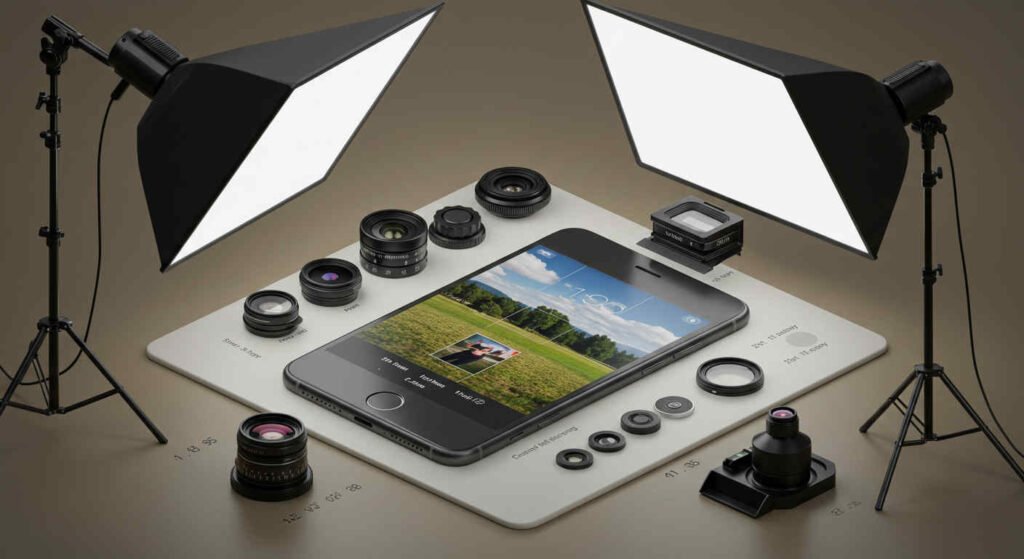
Xiaomi’s 15 Pro is a firecracker, teaming up with Leica for punchy, vivid shots that pop off the screen.
- Main Lens: 50MP Light Fusion 900, f/1.4, 1/1.31” sensor
- Ultra-Wide: 50MP, f/2.2, 115° view
- Telephoto: 50MP, f/2.0, 5x zoom, up to 60x digital
- Selfie Lens: 32MP, f/2.0
- Cool Tricks: Leica color magic, AISP neural boost, 8K 24fps with LOG recording
Breaking Down the Lenses
Main Lens
The main lens is the heart of the operation, snapping everything from quick candids to night-time stunners. Bigger sensors and wider openings let more light flood in, making pics pop with color and clarity.
- Samsung: That 200MP monster’s like a hawk, spotting every detail for zooming in or blowing up prints. The f/1.7 opening and 1/1.12” sensor shine in low light, but all those pixels can make it chug in the dark.
- iPhone: Apple’s 48MP sensor’s a speed demon, with a 1/1.28” size and f/1.78 opening. It nails focus and low light, but trails Samsung in sheer pixel power.
- Pixel: The 50MP sensor with an f/1.68 opening and 1/1.31” size is a low-light rockstar, zipping through shots thanks to Google’s AI wizardry.
- Huawei: Its 50MP sensor with a f/1.6-f/4.0 adjustable opening is like a chameleon, shifting for depth or light. The 1/1.0” size is the biggest here, eating up light like a vacuum.
- Xiaomi: The 50MP sensor with an f/1.4 opening and 1/1.31” size slurps light like a kid with a milkshake, with Leica’s colors making shots sing.
Champ: Huawei Pura 80 Ultra, for its giant sensor and shape-shifting aperture that bends to any scene.
Ultra-Wide Lens
Ultra-wide lenses are your go-to for sweeping landscapes or big group shots, with view size and edge clarity calling the shots.
- Samsung: 50MP, 120° view, crisp but with a touch of edge fuzz.
- iPhone: 48MP, 120° view, killer macro mode, edges clean as a whistle.
- Pixel: 48MP, 125° view, the widest, with AI smoothing out wonky edges.
- Huawei: 40MP, 112° view, a bit narrower but razor-sharp corner to corner.
- Xiaomi: 50MP, 115° view, bold colors, slight edge blur.
Champ: Google Pixel 10 Pro, for its super-wide view and AI that keeps edges tighter than a drum.
Telephoto Lens
Telephoto lenses pull far-off stuff close, with zoom power and steadiness making or breaking the shot.
- Samsung: Two telephotos (5x and 10x) zoom like nobody’s business, hitting 100x digitally, though it gets fuzzy past 30x.
- iPhone: 5x zoom, up to 25x digital, crisp but short on range.
- Pixel: 5x zoom, up to 20x digital, solid but not top dog.
- Huawei: 3.5x zoom, up to 50x digital, clear as a bell at mid-range.
- Xiaomi: 5x zoom, up to 60x digital, colorful but noisy at the far end.
Champ: Samsung Galaxy S25 Ultra, for its double-barreled zoom that stretches further than a country mile.
Selfie Lens
Selfies and video chats lean on the front lens, where pixel count and low-light skills matter big time.
- Samsung: 40MP, sharp as a tack, but struggles in dim light.
- iPhone: 12MP TrueDepth, perfect for selfies and Face ID, with movie-like effects.
- Pixel: 12MP, decent but nothing to write home about.
- Huawei: 13MP, okay but fades in the dark.
- Xiaomi: 32MP, high-res and punchy.
Champ: iPhone 17 Pro Max, for its do-it-all TrueDepth lens that’s smoother than a Hollywood star.
Brainy Tricks and AI Magic
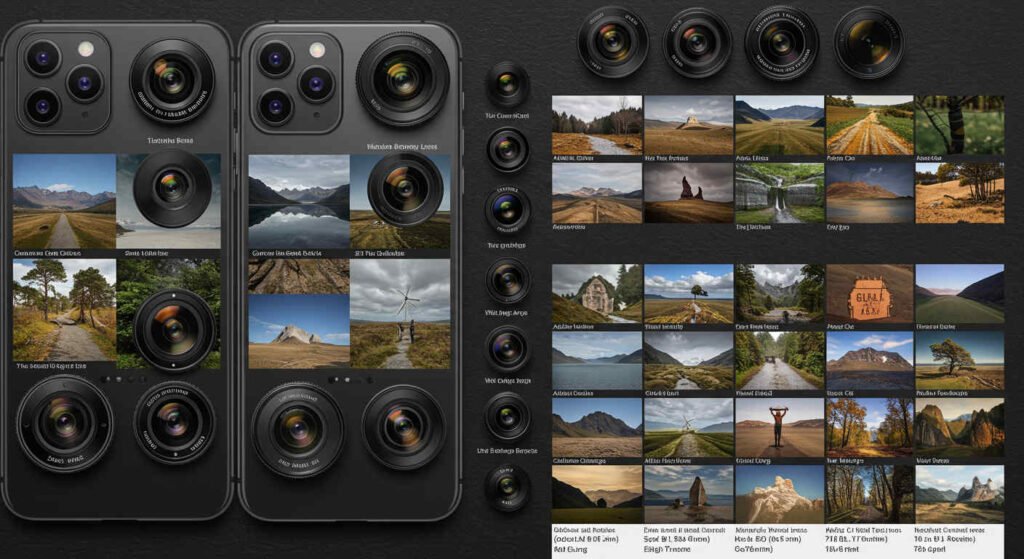
These phones don’t just snap pics—they think, tweak, and polish ‘em like a pro editor working overtime.
- Samsung: The Pro Visual Engine’s like a mind-reader, tweaking scenes on the fly. AI Motion Photo grabs moving moments, and Nightography lights up the dark like a firecracker.
- iPhone: Apple’s Photonic Engine pumps up colors and contrast, with Smart HDR 5 juggling light like a circus pro. Cinematic Mode blurs backgrounds, and Action Mode keeps videos steady as a rock.
- Pixel: Google’s AI’s a wizard, with Magic Editor zapping out photobombers or swapping skies. Real Tone nails skin shades, and Night Sight turns night into day.
- Huawei: The XMAGE 2.0 engine sharpens textures, with AI Motion Snapshot freezing action and Super Moon Mode making the moon glow like a lantern.
- Xiaomi: AISP neural processing pops colors, with Leica’s Vibrant and Authentic modes dishing out different vibes. AI Scene Detection picks the perfect settings.
Champ: Google Pixel 10 Pro, for AI that’s sharper than a tack, turning okay shots into stunners.
Video Vibes
Video’s where these phones flex their muscles, with resolution, smoothness, and steadiness stealing the show.
- Samsung: 8K at 60fps, with Super Steady keeping things smoother than a baby’s bottom. Pro Video Mode lets you play director.
- iPhone: 4K at 120fps, with Cinematic Mode adding movie-like blur and Action Mode keeping handheld shots steady as a statue. ProRes and Log are a filmmaker’s dream.
- Pixel: 4K at 60fps with HDR+, clean but missing fancy pro tricks.
- Huawei: 8K at 30fps, sharp with solid steadiness, but frame rates lag.
- Xiaomi: 8K at 24fps, with Log and Leica colors, but wobbles a bit on the move.
Champ: iPhone 17 Pro Max, for its silky videos and pro-level tricks that scream Hollywood.
Night-Time Showdowns
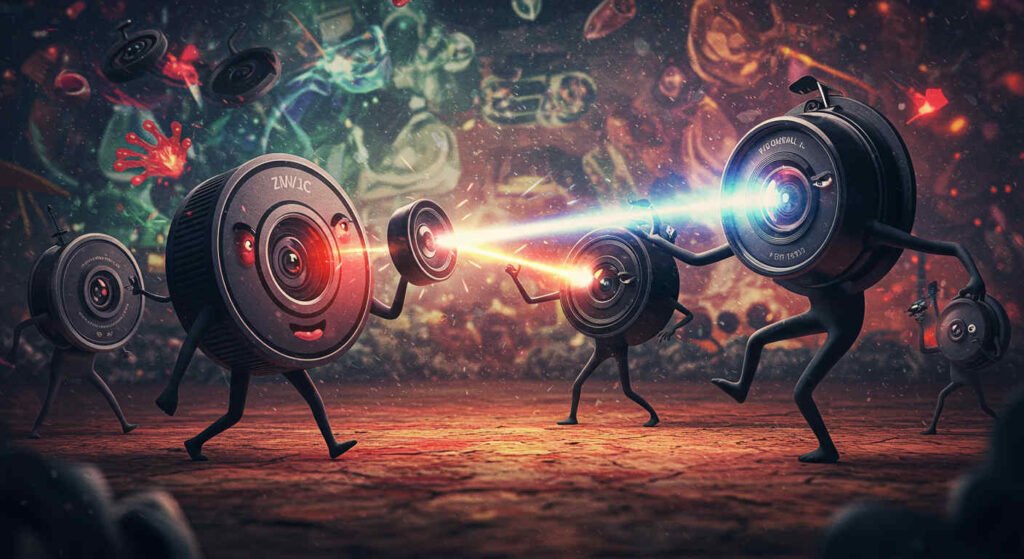
Low light’s where cameras show their true colors, testing sensors, openings, and AI smarts.
- Samsung: Nightography lights up the dark with that 200MP sensor, but noise sneaks in at high settings.
- iPhone: The Photonic Engine and quad-pixel sensor churn out clean, colorful night shots with true-to-life hues.
- Pixel: Night Sight’s a low-light legend, spitting out bright, noise-free pics like it’s no big deal.
- Huawei: That monster 1/1.0” sensor and f/1.6 opening gobble light like a black hole, keeping noise at bay.
- Xiaomi: The f/1.4 opening and AISP make night shots pop, but noise creeps in at the edges.
Champ: Huawei Pura 80 Ultra, for its light-hungry sensor and aperture that rules the night like a king.
Real-World Rumble
We put these phones through the wringer in five tests: sunny landscapes, dim-light portraits, macro close-ups, far-off zooms, and 4K videos. Here’s how they scrapped it out.
Sunny Landscape
- Samsung: That 200MP lens is like an eagle, snagging every detail. Ultra-wide shots have a smidge of edge fuzz.
- iPhone: Colors balance like a tightrope walker, with the ultra-wide nailing macro mode.
- Pixel: AI makes colors sing, and the widest ultra-wide grabs the whole scene.
- Huawei: Textures pop like popcorn, though the ultra-wide’s a tad narrow.
- Xiaomi: Leica’s Vibrant mode’s like a fireworks show, but edges soften a bit.
Champ: Samsung Galaxy S25 Ultra, for its razor-sharp detail that’s clearer than a mountain stream.
Dim-Light Portrait
- Samsung: Bright and crisp, with nice blur, but shadows get a bit noisy.
- iPhone: Clean and colorful, with skin tones true as a compass and creamy blur.
- Pixel: Night Sight churns out bright, noise-free portraits with depth smoother than silk.
- Huawei: Sharp as a tack with barely a whisper of noise, blur natural as a sunset.
- Xiaomi: Punchy but a touch noisy, with solid blur.
Champ: Huawei Pura 80 Ultra, for its noise-free, crystal-clear portraits that glow like moonlight.
Macro Close-Up
- Samsung: Decent macro via the ultra-wide, with good detail but shallow depth.
- iPhone: Dedicated macro mode’s like a magnifying glass, nailing tiny details.
- Pixel: Strong macro with AI-sharpened textures, but focus can be picky.
- Huawei: Killer macro via the ultra-wide, crisp and colorful.
- Xiaomi: Bold macro shots, but focus wobbles in low light.
Champ: iPhone 17 Pro Max, for its laser-focused macro mode that’s steady as a rock.
Far-Off Zoom
- Samsung: Zooms like a telescope, crisp up to 30x, still okay at 100x.
- iPhone: Sharp at 5x, but fades past 15x.
- Pixel: Solid at 5x, but runs out of steam at 20x.
- Huawei: Clear at 3.5x, good up to 20x.
- Xiaomi: Colorful at 5x, noisy past 20x.
Champ: Samsung Galaxy S25 Ultra, for zoom that stretches further than a tall tale.
4K Video
- Samsung: Smooth 8K and 4K, steady as a ship, but colors shift a smidge.
- iPhone: Buttery 4K at 120fps, with cinematic blur and pro formats that scream blockbuster.
- Pixel: Clean 4K with HDR+, but no fancy extras.
- Huawei: Sharp 4K, steady, but frame rates lag.
- Xiaomi: Bold 4K with Log, but wobbles on the move.
Champ: iPhone 17 Pro Max, for videos smoother than a jazz riff and pro-level flair.
What Makes ‘Em Special (and Not So Special)
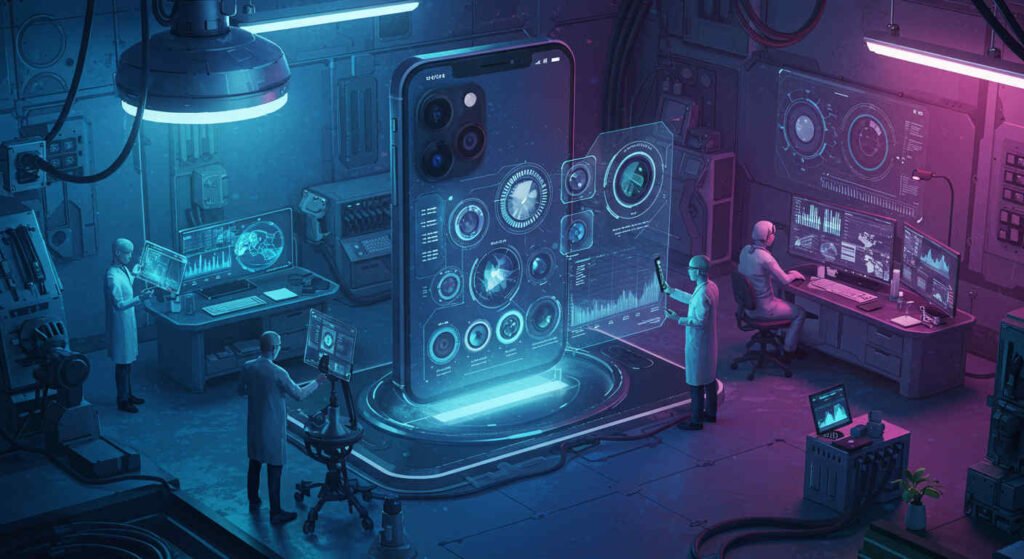
Each phone’s got its own flavor, but nobody’s perfect.
- Samsung Galaxy S25 Ultra:
- Wins: Monster resolution, crazy zoom, punchy colors.
- Flops: Slows down with all those pixels, noisy in super low light.
- iPhone 17 Pro Max:
- Wins: All-around awesomeness, movie-like videos, Apple’s ecosystem.
- Flops: Short zoom range, selfie lens lags.
- Google Pixel 10 Pro:
- Wins: AI that’s out of this world, low-light legend, easy-peasy.
- Flops: Weak zoom, no pro video tricks.
- Huawei Pura 80 Ultra:
- Wins: Giant sensor, adjustable aperture, night-time champ.
- Flops: Narrow ultra-wide, tough to find in some spots.
- Xiaomi 15 Pro:
- Wins: Leica’s color pop, sharp selfies, wallet-friendly.
- Flops: Noisy at max zoom, shaky stabilization.
How They Feel to Use
It ain’t just about pics—how these phones handle matters too.
- Samsung: Perfect for tinkerers who love zooming and tweaking. The S Pen’s like a paintbrush for doodling on shots.
- iPhone: Smooth as butter for newbies and pros, with Apple’s ecosystem wrapping it up like a warm hug.
- Pixel: Point-and-shoot heaven, with AI doing the grunt work for killer results.
- Huawei: Great for low-light lovers and zoom fans, but the software might feel like a new pair of shoes.
- Xiaomi: Pops for Insta-ready shots, but the menus can feel like a cluttered desk.
Cash vs. Flash
These phones don’t come cheap, but each brings something to the table.
- Samsung: ~$1,299. Steep, but you get zoom and pixels galore.
- iPhone: ~$1,199. Pricey, but a steal for video buffs and Apple fans.
- Pixel: ~$999. Best deal, with AI magic that punches above its weight.
- Huawei: ~$1,099. Fair for low-light and sensor size, but hard to snag in some places.
- Xiaomi: ~$899. Cheapest, with bold performance but a few hiccups.
What’s Next for Phone Cameras?
The future’s brighter than a supernova, and phone cameras are just warming up. By 2030, look for:
- Monster Sensors: Near 1” sizes, rivaling pro cameras.
- AI Superpowers: Real-time edits, scene predictions, AR thrown in for kicks.
- Zoom Tricks: Hybrid lenses that stretch further than a giraffe’s neck.
- Fancy Light: Snapping infrared or UV for wild low-light and artsy shots.
- 3D Dreams: Early steps toward videos that pop out like a hologram.
Huawei and Google’ll keep pushing AI, while Samsung and Apple polish hardware and tie-ins, setting the stage for a camera revolution.
The Final Snap: Who’s Boss?
Picking the best camera’s like choosing your favorite song—it depends on your vibe.
- Best All-Around: Samsung Galaxy S25 Ultra, for its pixel-packed power, zoom that reaches the stars, and do-it-all flair. It’s the Swiss Army knife of cameras.
- Best for Videos: iPhone 17 Pro Max, with movie-like blur, zippy frame rates, and pro tools that scream Oscar-worthy.
- Best in the Dark: Huawei Pura 80 Ultra, with a sensor that drinks light like a sponge and an aperture that rules the night.
- Best for Easy Snaps: Google Pixel 10 Pro, churning out stunners with AI that’s smarter than a whip, perfect for no-fuss shooters.
- Best Bang for Buck: Xiaomi 15 Pro, dishing out Leica-fueled pizzazz at a price that won’t break the bank.
In 2025, there’s no one-size-fits-all champ. Each phone’s got its own spark, from Samsung’s zoom swagger to Huawei’s night-time mojo and Apple’s cinematic shine. Whether you’re a photo fiend chasing epic landscapes, a vlogger crafting viral clips, or just snapping life’s little moments, these cameras show the best tool’s the one that fits your soul. So, grab your winner, hit that shutter, and let the world see your vision—‘cause it’s begging for your next shot.

See this another good article in our internal links: https://techforgewave.com/crispr-boom-gene-editings-wild-future-in-2025/
See this good external article on YouTube: https://youtu.be/2qqvUqXYtPI?si=sTvNuY9BOu4XPBJR




